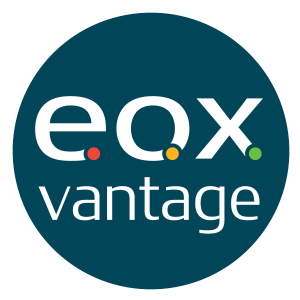It’s time for a change in the way the insurance industry does business. Historically, the approach has come from a transactional viewpoint – that is, how many (good) policies can I sell?
While that outlook is still valid, these days, COVID has changed consumers’ perspectives and expectations. Online shopping, curbside pickup, fast delivery – the overall 'Amazon experience' has primed us for quick transactions and more or less instant gratification. Their purchasing decision process is changing, with customer experience becoming the ultimate difference-maker.
The Insurance industry needs to take this movement into consideration and alter its approach from transactional to one centered on the customer experience. Trust that the policies will follow; retention rates and referrals will increase.

Many policyholders make their decision based primarily on price. They may not always select the lowest alternative, but it is a leading decision factor …with a bit of trust and friendship thrown in. As we move to Usage Based Insurance (UBI) and embedded offerings, price will have less bearing on the decision as in many cases, automatic procurement without knowledge of the price becomes standard practice.
This shift, combined with providing the ensured with information and workflow that enhances their daily operations, will create a true value-added partnership. Such a closer, trusting relationship will minimize the chances of the insured shopping their coverage at renewal time.
Given that consumers still want to buy from people (or at least sources) in which they trust, the question becomes how to move from face-to-face interactions to online/virtual interfaces, where insurers' web or mobile presence stands in as the trusted entity?
You should consider several moving parts as you structure your solution. The foremost is understanding your target market and their daily operations. The ideal situation is to become part of their daily operations. You then need to look at the structure of your solution, paying attention to:
- Awareness
- Ease of procurement
- Added value offering(s)
- Maintenance and upkeep of the policy
Awareness
People aren’t going to buy something they don’t know about. This is simply marketing, and there are two parts to it. Your market needs to be aware of your brand and the product, and they should know what’s in it for them. Why should they select your product and why should they be willing to pay a bit more for it?
One easy method is to solicit and highlight social media reviews. If end-users are satisfied, they will let others know and it creates a feedback loop leading to more business. Social media is today’s ‘word of mouth’ marketing. It used to be that people would ask their neighbors who they trust. In an online world, everyone with web access is a neighbor.
Ease of procurement
This is where techniques such as straight-through processing come into play. A traditional insurance offering may take days or weeks to go from submission to bind and involve an unnecessarily time-consuming process for your agent and/or policyholder. You need to break down the process and determine what can be simplified and what can be automated.
You may desire 80 data points to rate a risk, but do you need to ask 80 questions? With today’s technology, the answer is no. Simplify the process. A prospect expects you to ask for an address for a homeowner’s policy. From that one piece of data, mechanisms can be put in place to go to other data sources and automatically pull from them to determine more data such as value, ownership status/liens, risk profile for fire/flood/earthquake/etc., structure type, condition and more.
Keep the questions to a minimum. Make some educated assumptions that can be validated before binding and present options back as soon as possible. This can serve as the base premium. Then, figure in the impact of suggested or selected optional coverage.
I recently worked with a client on a straight-through processing offering for a liability product where the submission to bind time was reduced from three-to-five-days to just 15 minutes. The back-office savings alone more than paid for the solution. The additional policies closed due to ease of procurement supplied the icing on the cake.
Added value
Understanding a client’s business and building offerings that make their life easier enables you to position yourself as a consultant rather than a vendor. More than that, it also makes your product part of their daily activities in such a fashion that they won’t want to think about shopping around their renewal.
Another recent client had an opportunity to bid on coverage at a franchise type organization. The prospect was having struggles using a legacy workflow and system(s) to maintain their inventory, requiring substantial administrative support. Claims submissions were cumbersome and typically weren’t closed for over 30 days.
We worked together to offer a better way. The local users are now able to directly and immediately maintain their inventory and submit/track/resolve claims. The result: implementation of the solution across all the franchise locations, as well as wins at three additional similar franchise organizations.
In this case, the insurance offering has effectively been transitioned from a transactional offering to an embedded solution. The end-client is spending more, but getting more for their money and can better focus on their core business.
People and companies want to take steps to control their premiums and reduce their risk. This may be as simple as providing a scorecard indicating where they can take action.
For instance, employee/driver training can address potential risk exposure (change or rotate tires, avoid excessive speed, etc.) or install a system of sending messages to policy holders with notices of severe weather (anything from ‘seal the hatches for a storm or flood’ to ‘make preparations to evacuate’). You may build gamification and feedback into the system, efforts which lead to a stronger connection with the insured.
Maintenance and upkeep
Enabling the policy holder, or agent, to retrieve insurance cards and easily perform policy update tasks such as new vehicle/driver information is another way to keep them connected. This may be done through a portal or mobile app. Make it as simple as possible to access and use.
Another example would be claims submission: give them directions for what to do to maintain safety; what to gather, including pictures or a brief description; the best contact information, etc. Immediate response shows connection and concern in their time of need, plus an opportunity to gather additional data and set expectations for timely resolution.
One more client sought to address an issue they were having with agents’ workflow. This resulted in a reduction of time for creation of packaged quotes and renewals from five hours to 20 minutes. The results are showing fewer 'late' quotes and an uptick in retention.
This client bought into the current trend of people expecting simplicity and immediacy. Others can follow their example to work with their prospects to understand their business and challenges.
Simply put, build an offering that integrates coverage with the insured's daily activities. Make it easy for them to procure and maintain.
As Sam Walton of Wal-Mart has said, "Know your customer as well as you know your technology. There is only one boss: the customer." In that spirit, serve your clients and grow using a new and necessary way of doing business.



